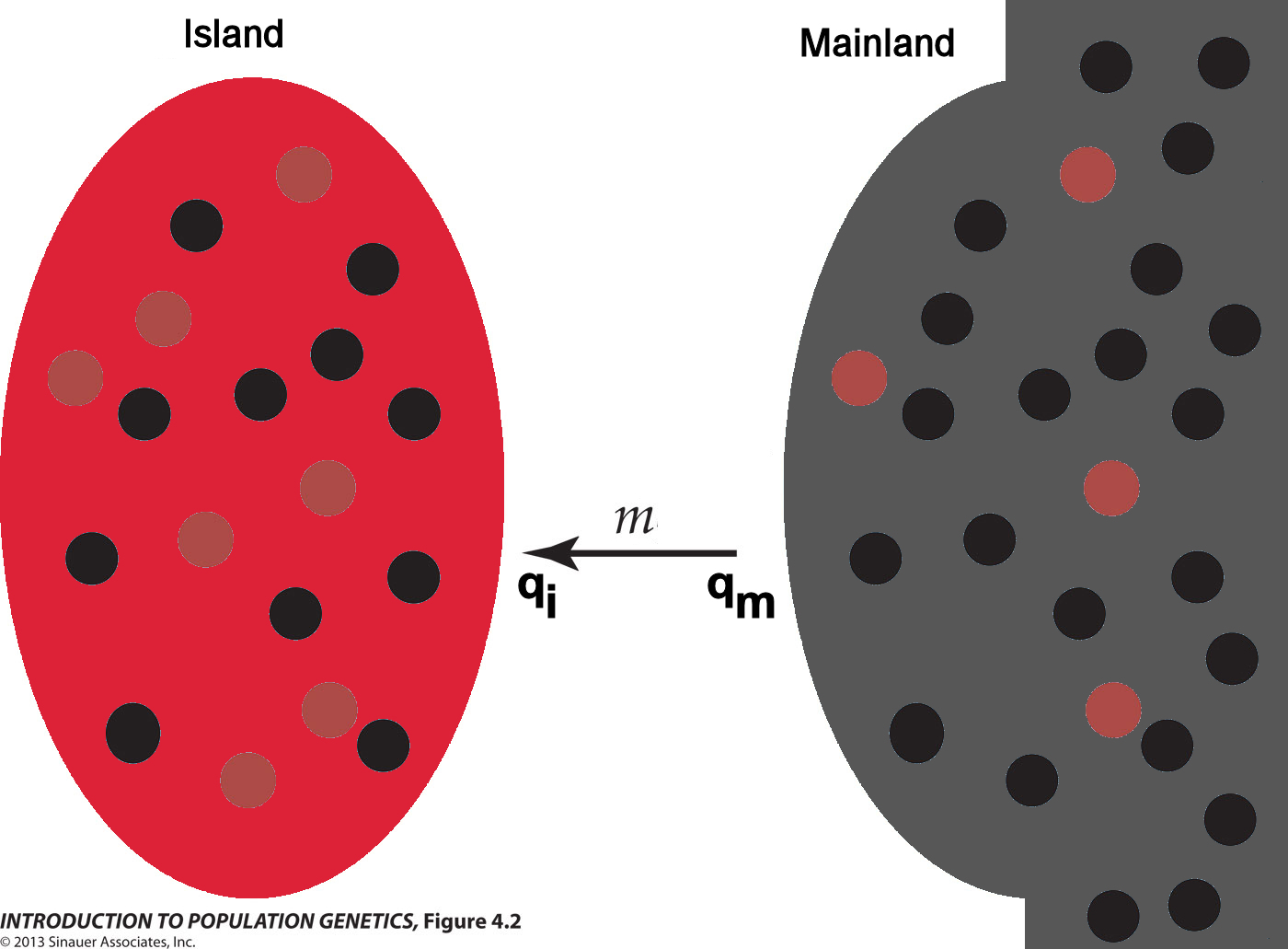
Island Model
of Migration
Consider
a small island adjacent to a mainland. As the mainland
population is much larger than that of the island, movement of
individuals (migration) from the mainland to the island
has a large impact on the composition of the island gene pool,
whereas movement in the other direction contributes relatively
little to the mainland gene pool. Under these conditions, the
migration rate (m) can be estimated as the fraction of
newly-arrived immigrants from the mainland in the island
population.
The picture illustrates the scenario of natural selection. The
mainland has a dark background, where dark individuals are
cryptic and light individuals non-cryptic. Selection will favor
the former. In contrast, the island has a light background, on
which light individuals are cryptic and dark individual
non-cryptic. Absent movement between mainland and the island,
each population will tend to become fixed for the cryptic
phenotype. Given migration at a rate m from
the mainland to the island, an initial difference in the
frequency of q of the allele for the dark
color on the island (qi)
and mainland (qm), and differential
selection on q on the island and mainland,
the island frequency qi
will eventually arrive at an equilibrium determined by the
differential fitness of the non-cryptic allele and its
replacement from the mainland.
Figure
modified from © 2013 by Sinauer; Text material
© 2020 by Steven M. Carr

